
Released in 1999 Sam Mendes’ film scripted by Alan Ball and starring Kevin Spacey as Lester Burnham, an advertising executive who experiences a mid-life crisis received many awards and accolades for its screenplay.
The film (which actually began life as an unproduced stage play) can be regarded as part of a chain of ‘millennial’ films crafted throughout the 90’s ‘warning’ audiences to live more meaningful lives, Fight Club, Magnolia and The Green Mile (all released in 1999) could be classed as similar examples.
Seventeen years later the film may be less prominent in discussion but there is still much it can offer by way of a lesson in screenwriting. Here are ten scriptwriting lessons we can learn from American Beauty:
1. Visual Motifs
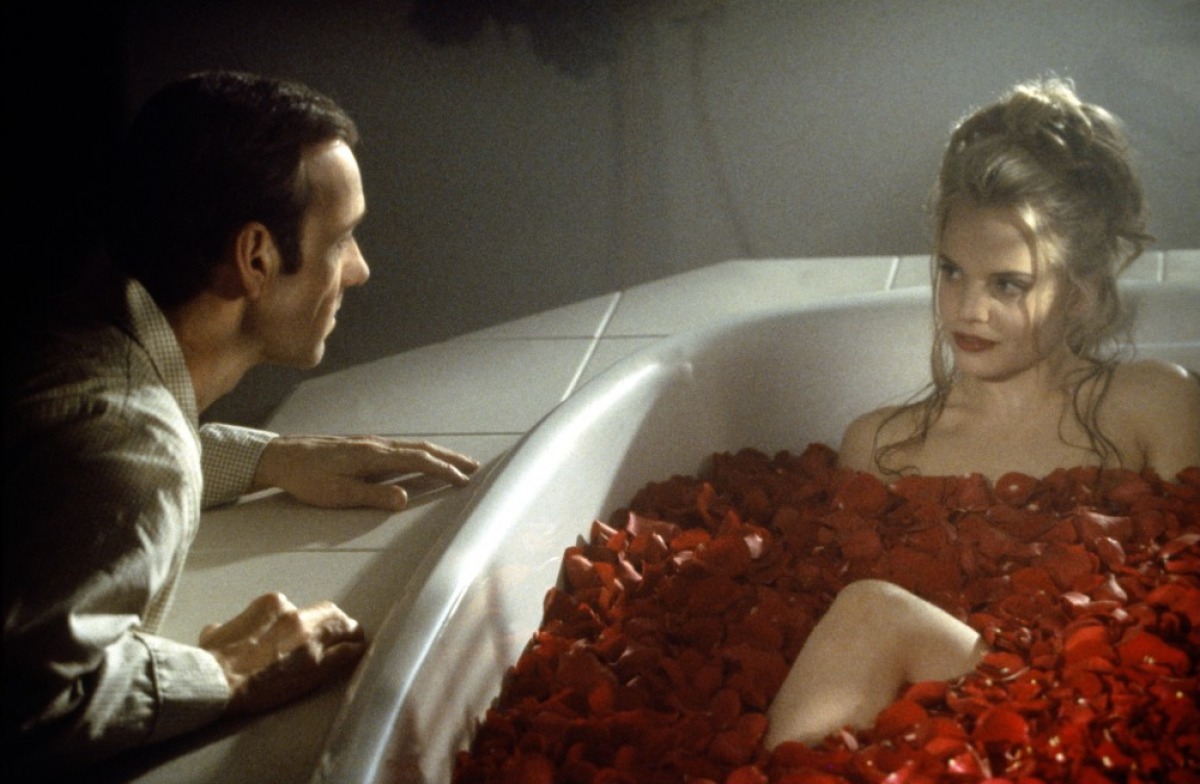
From the floating plastic bag to the red roses and their petals, gimmicks soon tire but valid visual motives that help to convey theme add depth to a script whilst also assisting to make a film memorable.
The rose petals which feature through the film both Lester’s fantasies concerning Angela (Mena Suvari) and in reality – the roses his wife Carolyn (Anette Benning) grows in the garden and cuts down to place in the house.
Regardless of any meaning they may convey (see below) they were an instantly recognisable aspect of the film – featuring throughout most promotional material and packaging.
In tune with the rose petals, red also carries through the film as a visual motif (Lester’s Pontiac Firebird is this colour, Carolyn frequently wears red etc), simple and effective. This red also serves as a clear contrast to the otherwise predominantly dull/drab colours of the suburban surroundings – something that needs to be clearly expressed within the slug-lines and scene description.
The Plastic bag was also a genuinely original inclusion (it too floats in front of a red-brick building wall) regardless of how the viewer chose to interpret it; this simple image became an iconic feature of the film despite almost being cut at the editing stage.
Noteworthy but not unique to the film is the consistent use of straight lines and symmetry, roads, the layout of domestic furnishings and the use of these lines to ‘imprison’ characters – Lester reflected in the vertical text on his computer screen, Rick (Wes Bentley) and Jane (Thora Birch) behind window frames.
In short, simple but original visual motifs well expressed make a film/script recognisable, the writer should make use of the mise en scene (the ‘staging’) and express it visually within the scene description – of course these elements should work in conjunction with any themes the writer wishes to express.
2. Be Beguiled, Write Things Down and Work at Them
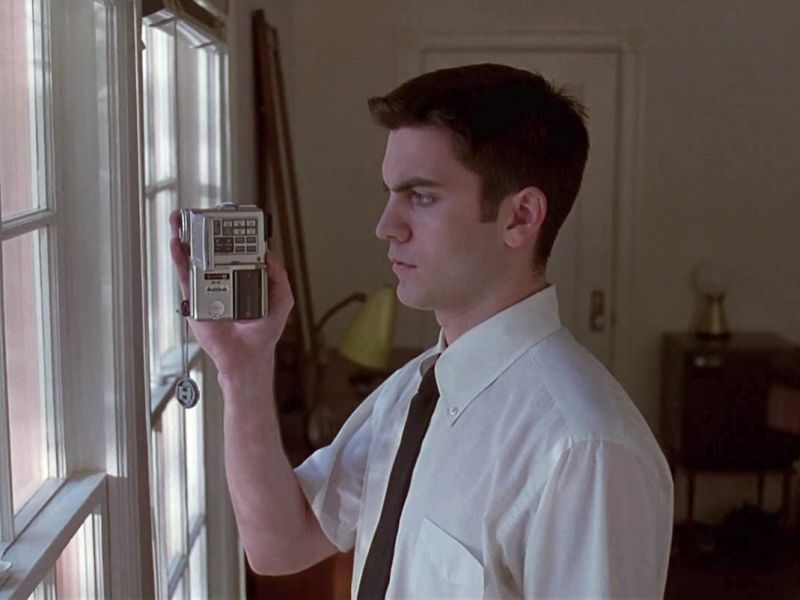
The plastic bag also presents a bonus lessons for the writer. Ball states the idea stemmed from a real life incident in the early 90’s watching a plastic bag blowing around in the street beneath the World Trade Centre.
After watching it for ten minutes, the sight and ‘emotional response’ it triggered stayed with him for years afterwards. It is fair to argue here that what beguiles the writer may present original and equally captivating images and concepts for an audience also.
American Beauty began as an idea for a stage play in 1992, at the time Ball was drawing inspiration from the Amy Fisher trail (a 17 year old girl dubbed the ‘Long Island Lolita’ who shot the wife of her alleged lover), overtime the idea developed and changed, eventually approaching the final concept in 1997.
During the interim it is fair to assume that the idea was at some point ‘abandoned in a draw’, taken out again, revised and reworked with fresh perspective but never throw away or completely forgotten. In the case of the plastic bag, Ball was fortunate as he remembered the incident, but sometimes, no matter how potent that moment of inspiration may be, great ideas are formed and forgotten in an instant.
The lesson here is to commit moments and ideas to paper/dictaphone/back of the hand/chosen method of information storage – and work at them (often the original idea/concept on its own doesn’t make a great story) – they might just win you an Award.
3. The Best Stories Appear Simple but Run Deep
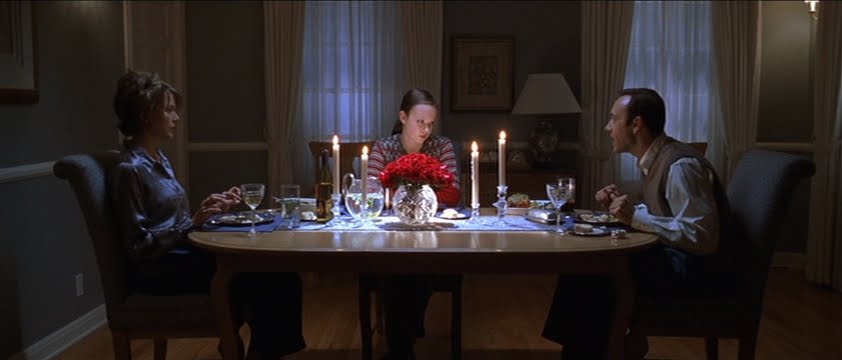
Some up the basic plot of American Beauty in one line It’s about a 42 year old man experiencing a mid-life crisis, as the film’s tag-line urged us – we need to ‘look closer’.
On the surface the actual plot of American Beauty is quite simple, however it is through the actions/motivations, reactions and consequences of the characters that depth is created. This depth allows the relatively simple narrative to evoke the required intellectual and emotional response in the audience – making them both feel and question (and what to watch and rewatch the film).
Why is it that Lester, a man with everything he should possibly want has lost all joy of life, the reality of repressed sexuality (something Ball states he drew from his own opinions relating to his father), Carolyn’s near psychotic scolding of herself when she fails to sell a house, domestic violence – former marine Frank Fitts (Chris Cooper) beating discipline into his son, adultery – the film makes use of these quite clichéd elements by examining them at a far deeper, more mature, emotional level.
The film makes cliché work for it but opening up the mechanics of these clichés. The lesson here is that the best scripts are not the ones with hugely over complicated plots, a simple concept well done (in this case expressing the wants, needs, motivations and fears of its characters) achieves results which both engage and resonate. This approach might not suit every script of film genre but American Beauty would not be the film it is without this approach.
4. Consider the Classics
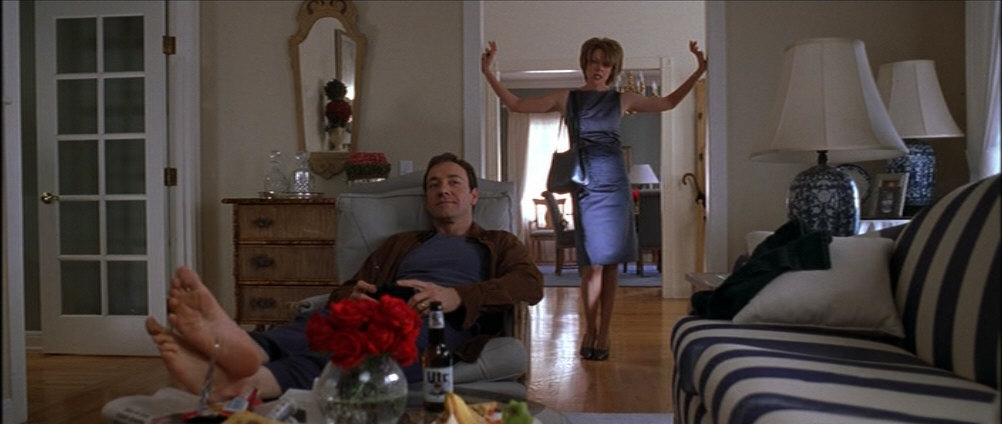
It has been observed by some critics how the film’s narrative contains the elements of a Greek Tragedy. In simple terms, the audience know Lester is going to die, the story is part-narrated in retrospect, they know the story is going to end in tragedy for the central character.
Attention has been drawn the moment of clarity Lester suddenly experiences before his death, his epiphany after he refuses to have sex with Angela. This was in fact an alteration to the original script in which they did have sex and was suggested by then president of Dream Works Walter Parks.
Parks drew attention to the epiphany moment in Greek Tragedy – persuading Ball to alter the script thus allowing Lester ‘redemption’. Considering correlation classical and mythological form is often a useful template for a writer to construct or in this case redraft a script by.
People/audiences have been experiencing the same basic stories for thousands of years, sometimes a break in convention works but one needs to be aware of it to consider it or risk breaking the trajectory of the narrative. The lesson here is ‘don’t ignore the classics’ – an awareness of them will serve a writer well.
5. Keep Focused
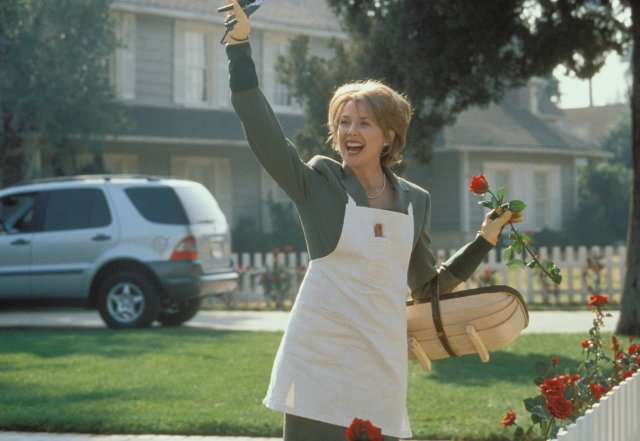
Being creative and letting it flow into the script is all very well, but a writer needs to keep a focus on the story they want to tell and the methods they employ in doing this. It should be noted here that Lester, as the central character, is the only one with whom the audience share fantasy/dream sequences.
Crucially this contributes in maintaining our empathy with him – along with the voice over/narration – he is in many ways something of a lone protagonist issue covered in another list. However, it might be tempting for the writer to explore the inner psychology of other characters – a mistake as this would result in something of a confusion and go against the grain of the narrative.
Pause for a moment to consider, this is a story told in flashback by Lester, although the audience witness events he wouldn’t have been privileged to see, displaying the inner psychology of other characters may have been a step too far in terms of ‘screen logic’.
Similarly, American Beauty is in effect told in flashback and does feature some fleeting flashbacks as Lester recalls his moment of death. However, flashbacks from other characters would have jarred the narrative.
As an example of this, an early draft of the script did feature a flashback to Frank Fitt’s Marine days – thus exploring his backstory and motivations in detail, this scene was dropped for the very reason above – it would have been a flashback within someone else’s flashback confused the flow of the narrative.
Granted multi stranded stories are needed (see lower down) but the writer needs to keep a focus regarding what/who is the main story and what methods they employ to do this.